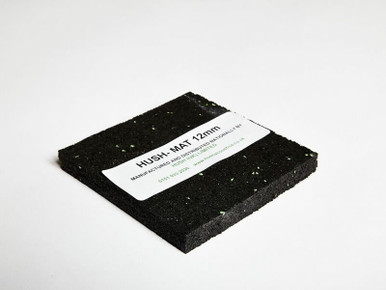Introduction
Any homeowner or renter may experience noise pollution. Nothing is more frustrating than not being able to sleep because of uncontrollable outside noise. While you may not be able to completely stop the noise, you can reduce it (and get a good night's sleep!). The most efficient method is sound insulation (also known as "acoustic insulation").
How does sound insulation work?
One of the basis of a good home is the peace and quiet place where you can take a rest without hearing unecessary noises. These noises are made from sounds in which travels through most walls, floors, and doors by vibrating the entire structure. This vibration generates new sound waves of compact strength on the other side of the surface.
These sound waves are which the once that makes noises hearable from a place only bounded by walls or can be called as sound transmission. Sound transmission is the flow of sound into one room of a building from a source located in another room or outside the building.
The term "broadband transmission loss" refers to the degree to which a wall or other barrier limits sound transmission. Sound transmission loss is measured in decibels (dB).
The worse a wall's transmission loss is, the less efficiently it serves as a noise barrier. Sound insulation aids in the reduction of transmission loss. The greater a wall's transmission loss, the more sound insulation is required. With an efficient sound insulation, noise pollution will never get inside the house making it peaceful and noise free.
The main types of acoustic insulation
Acoustic insulation in buildings is classified into two types: airborne and impact. Reduce the sound that is pumped directly into an airborne space by using airborne acoustic insulation. Our ceiling tiles are an example of this type of insulation.
These provide a simple but effective solution to the problem of airborne sound. They are lightweight, simple to install and provide effective noise reduction with minimal effort.
For floating floors and office spaces, use impact acoustic insulation. JCW Impactalay acoustic floor underlay is an example of this type of insulation. JCW Impactlay is a full-service soundproofing system. It combines three acoustic layers to provide a low-cost and simple-to-install solution to unwanted noise.
What are the best ceiling tiles for soundproofing?
If you want to know what ceiling tiles are excellent for soundproofing, you should first decide if you want soundproofing or sound absorbing. There are options that incorporate both. In identifying the tiles that suits your wants, you can purchase best soundproofing, sound absorbing, or both that can be incorportated in your walls.
What is the difference between soundproofing ceiling tiles and sound absorption materials?
Soundproofing materials act as a noise barrier. This significantly reduces noise levels coming into or out of a space by blocking sound.
Sound-absorbing materials absorb sound within a room or place. Noise, echos, and reverberations are reduced as a result.
This is a small but significant distinction, and you will almost always need to install both types of sound insulating materials.
Consider the following scenario: you want to install ceiling tiles in a busy business building. If the house is in a highly noisy area, there is a possibility of sound originating from outside sources. The main requirement for lowering noise in an office environment, however, is to lower the levels within the offices themselves. These noise levels are influenced by daily activities such as discussion, phone calls, and equipment. This will enhance privacy, attention, and productivity. The primary aim in this case is sound absorption.
However, if fitting out a block of flats or apartments, you will want to block noise between floors. This will allow for improved comfort and privacy of the building’s residents as the main priority.
What are the best ceiling tiles for soundproofing or sound absorption?
Any type of ceiling tile will act as a barrier between a room and the space above it. Specialist goods with outstanding acoustic capabilities, on the other hand, are the ideal ceiling tiles for soundproofing or sound absorption.
Acoustic characteristics are measured in decibels (dB) and sound absorption is graded from A to E, with A having the maximum level of sound absorption. Here are some instances of the efficacy of some of our most popular specialist acoustic ceiling tiles:
JCW noise blocker panels reduce the amount of sound that goes through a suspended ceiling by about 24 to 27dB.
JCW noise stopper or'sound stop' ceiling pads provide a dual performance, limiting sound transfer while also absorbing it. They help to reduce noise levels in existing buildings by providing a mean average performance of around 14dB. The product is installed over an existing suspended ceiling.
Acoustic ceiling tiles from JCW stick (may be directly bonded) to walls and ceilings to minimize noise within a room or building with absorption class C.








